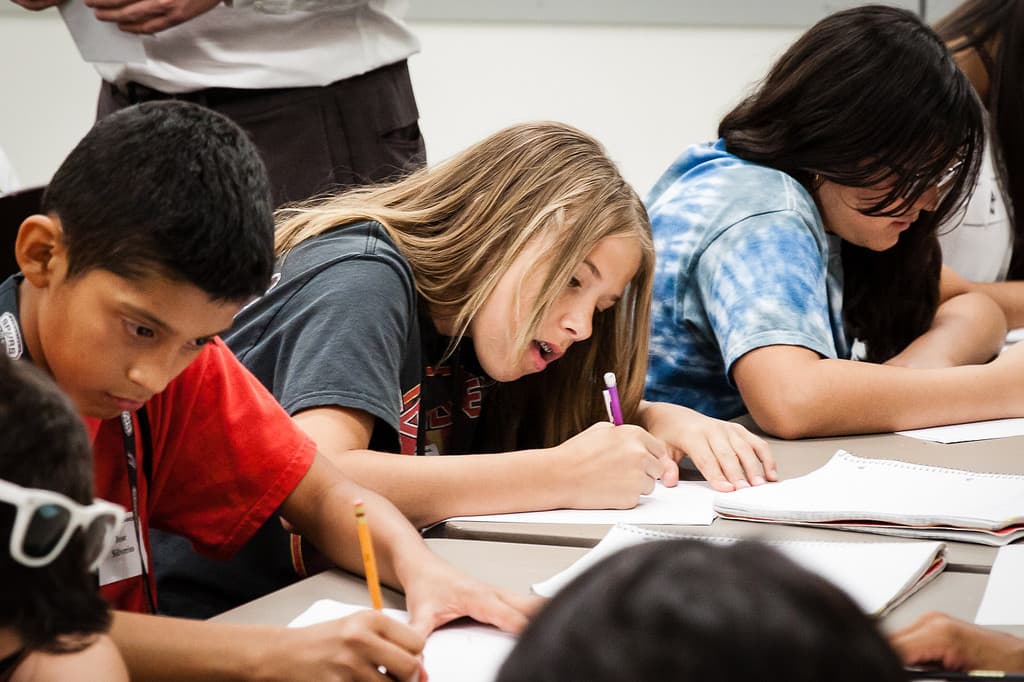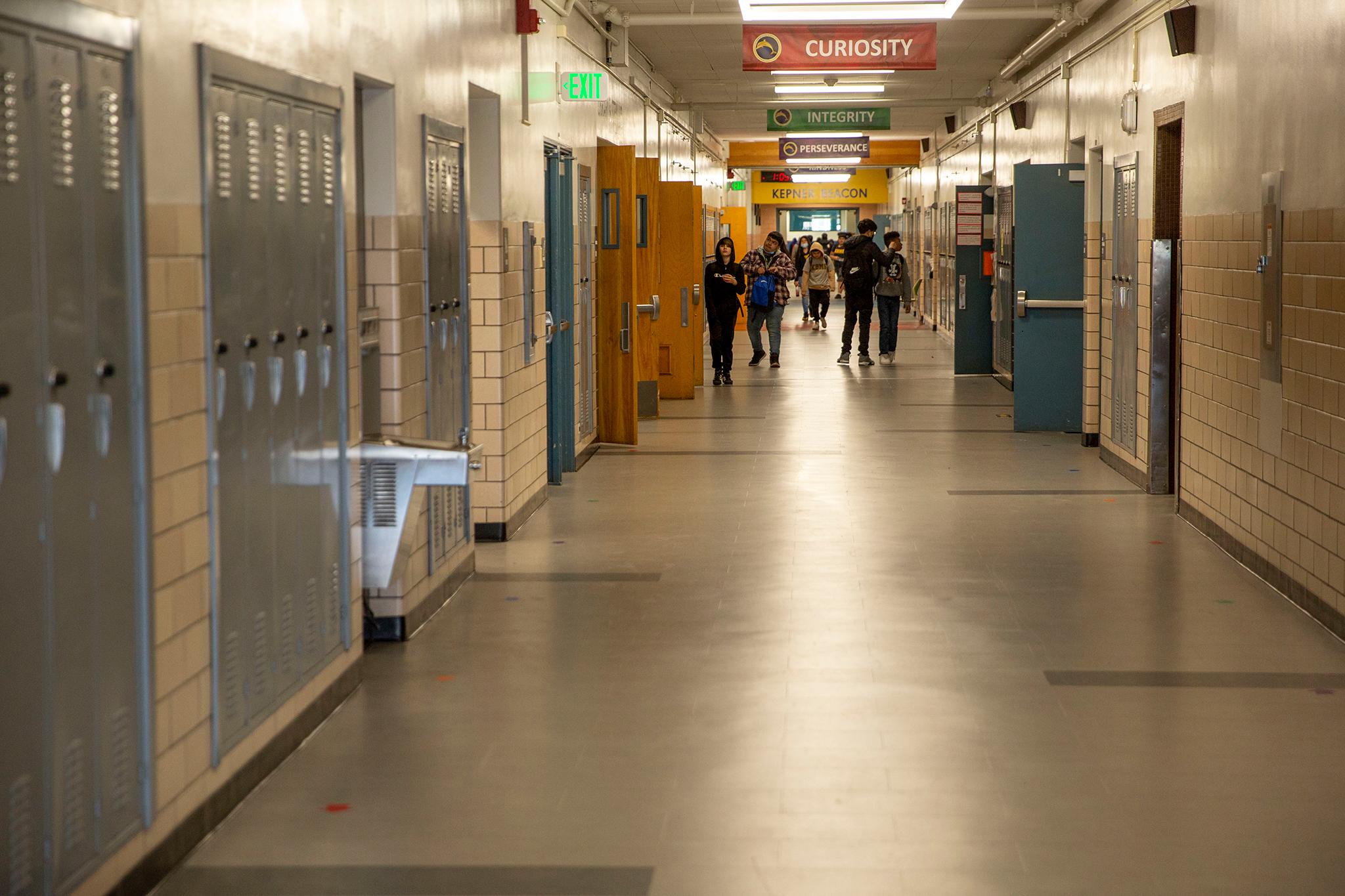Three low-performing Denver elementary schools are being recommended for closure under a new school district policy: Amesse, Gilpin Montessori and Greenlee.
Denver Public Schools announced on Thursday the recommendations for Amesse, in the Montbello neighborhood in far northeast Denver, and Gilpin, in the Five Points neighborhood in northeast Denver. On Friday morning, the school district made public the recommendation for Greenlee in the Lincoln/La Alma Park neighborhood in west Denver.
West Early College, a high school on the West High campus, was also facing a possible closure recommendation due to poor school ratings and low test scores. But the district announced Friday morning that it will not be recommended for closure because its score on a recent school quality review revealed it was on the right track toward improvement.
The school board is scheduled to vote on the recommendations at its Thursday meeting.
The district is recommending that Amesse and Greenlee be restarted, meaning the schools would be closed and replaced by a model the district deems more likely to succeed. The recommendation for Gilpin is different: DPS staff is recommending it be closed at the end of the school year but not replaced because of low enrollment projections.
The district’s new school closure policy, called the School Performance Compact, was adopted by the school board last year. It evaluates low-performing schools using three criteria:
- Whether they rank in the bottom 5 percent of schools based on multiple years of school ratings and aren’t exempt from the policy because they’re in the midst of a significant intervention meant to boost performance;
- Whether they failed to show an adequate amount of growth on the most recent state tests;
- And whether they scored fewer than 25 out of 40 points on a school quality review.
Schools that meet all three criteria can be recommended for restart or closure. Though DPS has over the years closed dozens of schools for low performance, next week’s vote will be the first time the school board uses the new policy to make the decision.
Amesse Elementary was “orange” this year on the district’s color-coded rating system, called the School Performance Framework. Orange is the second-lowest rating. In 2013 and 2014, it was “red,” the lowest rating. (There were no ratings in 2015 due to a switch in state tests.)
Greenlee was the same: orange this year and red in 2013 and 2014.
Gilpin Montessori was red this year, orange in 2014 and red in 2013.
All three schools also showed lower-than-average academic growth when compared to other Denver elementary schools on the most recent state tests taken last spring.
The percentages of students meeting or exceeding expectations on those tests were low, too. For instance, just 11 percent of fourth-graders at both Amesse and Greenlee, and 14 percent of fourth-graders at Gilpin, met or exceeded expectations on the state English test.
The school quality reviews for Amesse, Gilpin and Greenlee were conducted in November by SchoolWorks, a Massachusetts-based consulting company. The review teams that visited the schools included SchoolWorks employees and DPS staff members.
The teams rated the schools in 10 different categories for a total possible score of 40 points.
Amesse and Gilpin both scored 24 points. Greenlee scored 22 points. However, all three also scored a “1” in at least one of the 10 categories. Under the district’s criteria, that can trigger a closure recommendation, regardless of a school’s total score. West Early College scored 25 points and had no “1”s.
Amesse got the lowest marks in the categories of classroom instruction and in teachers’ ability to measure student progress and adjust their teaching methods accordingly.
Reviewers did 23 observations and noted seeing many children off-task.
“In one classroom of 23 students, eight students were writing, three students were working with the teacher and 12 students were off talking or wandering around the room,” the review states.
Reviewers also observed teachers giving less-than-helpful feedback.
“For example, when a student answered a question incorrectly, the teacher gave the correct answer and moved on, instead of asking the student to explain his/her thinking,” the reviewers wrote about one classroom they visited.
Greenlee struggled in the same categories.
“Many students were observed not paying attention, staring off into space and not completing assignments,” wrote the review team, which conducted 10 observations. “…most teachers did not attempt to re-engage these students, allowing them to opt out of lessons.”
In Gilpin’s review, which was based on 16 observations, the school did a bit better on classroom instruction but just as poorly on teachers’ ability to assess progress and provide feedback.
“The site visit team observed ineffective feedback in 25 percent of classrooms,” Gilpin’s review states. “In these classrooms, feedback was not specifically connected to the learning goal but rather focused on task completion or attributes of the student’s work. Observed examples included: ‘You’re doing it right;’ ‘Great job;’ or ‘Nice handwriting.’”
Read the full school quality reviews below.
Chalkbeat is a nonprofit news site covering educational change in public schools.












